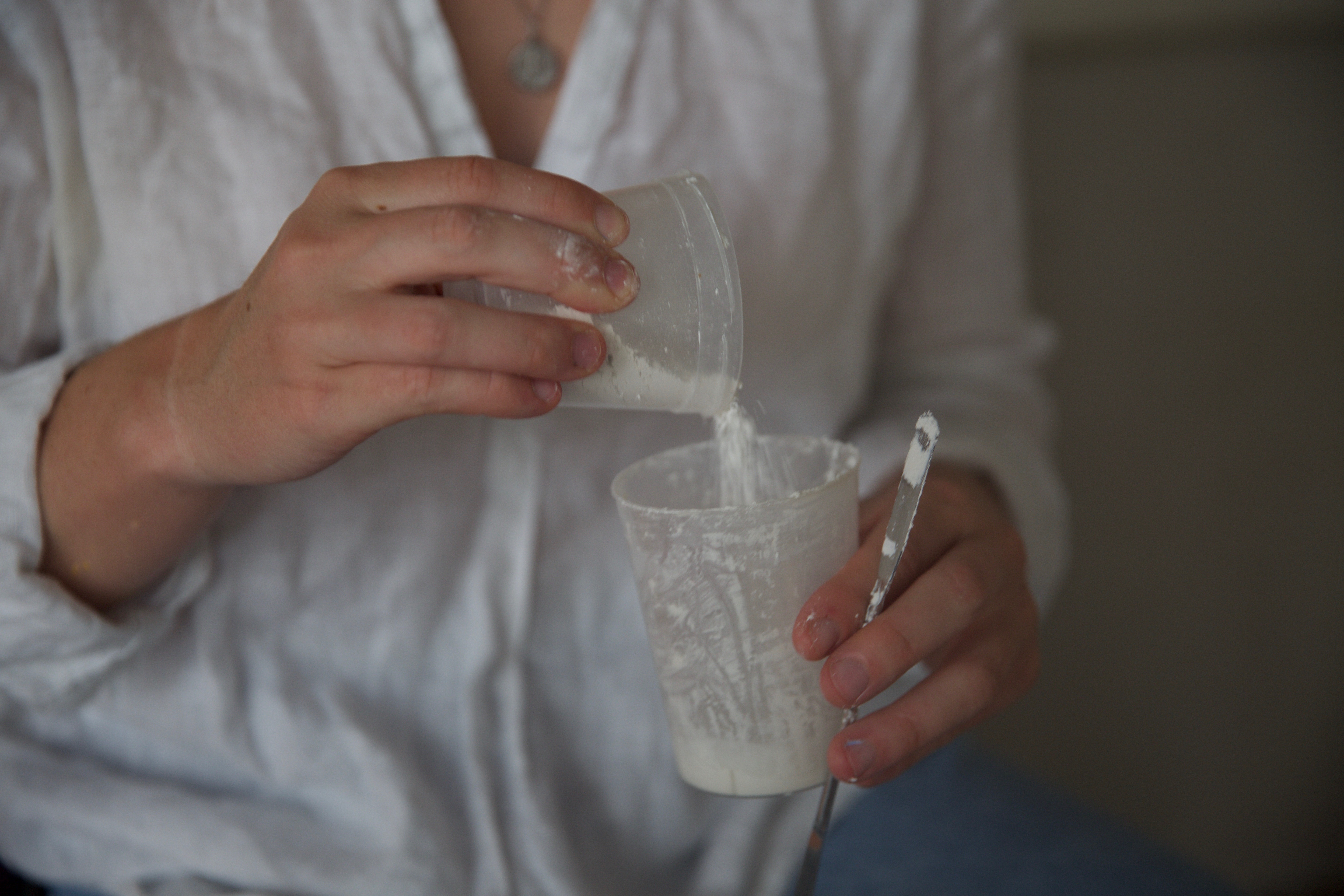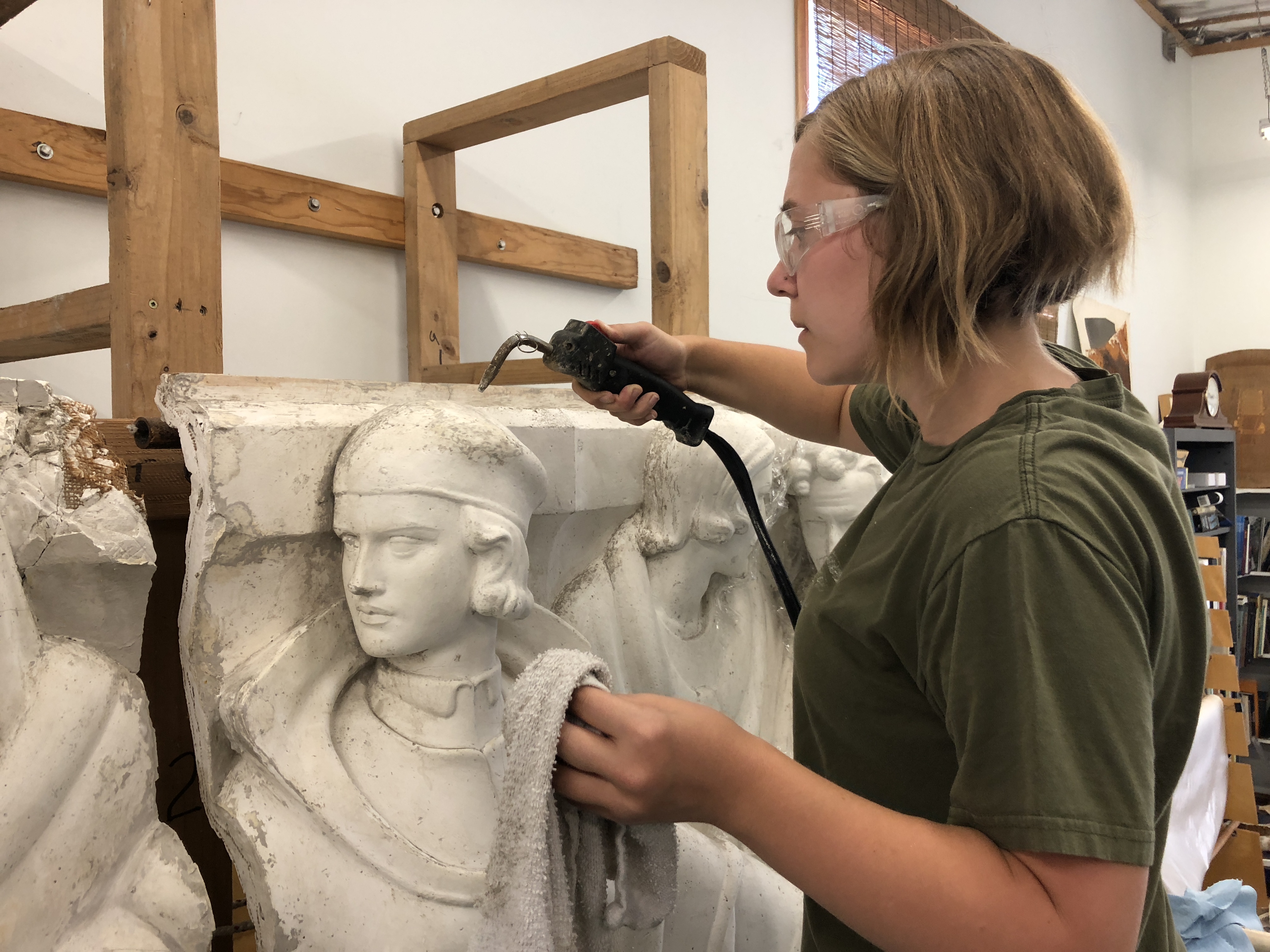In 2004, inspired by the Scripps Landscape and Architectural Blueprint Committee’s recommendation to preserve the historic character of the campus, Ruth Chandler Williamson Gallery Director Mary MacNaughton ’70 spearheaded a massive restoration of the eight relief sculptures that adorn the exterior walls of Sycamore Court and Balch Hall, each depicting a seminal scene from eight of William Shakespeare’s plays. Created in 1932 by British-born American sculptor John Gregory, these plaster reliefs were models for marble sculptures that grace the exterior of the Folger Shakespeare Library in Washington, D.C. To undertake this massive project, MacNaughton hired expert Donna Williams, head of Williamson Conservation, in Los Angeles.
Fourteen years later, the bas-reliefs are still being restored. To date, three panels have been completed, including Mid-Summer Night’s Dream, Romeo and Juliet, and The Merchant of Venice. Each panel has been cleaned, reinforced, and reinstalled on a strong base. The next panel to be treated is Macbeth, which is now in Williams’s Hollywood studio, where Scripps summer interns assist her with the conservation efforts.
MacNaughton created paid conservation internships to give students critical experience in the field of art conservation through this and other conservation projects. These opportunities enhance the art conservation major, which is the only one of its kind on the West Coast.
This summer, conservation interns Aubrey Beam, Madeline Helland ’18, Gillian Holzer ’19, and are shedding light on these nearly 100-year-old artworks and the interdisciplinary field of art conservation. “This internship gives conservation majors invaluable hands-on experience,” says Holzer. “In order to get a foot in the door of the competitive art conservation field, it’s necessary to have worked on treatments. The Scripps major is unique in the access to real projects that it gives undergraduates.”

From left to right: Expert art conservator Donna Williams leads the restoration of the Shakespeare reliefs at Balch Hall, assisted by La Fetra Ludwick Intern Gillian Holzer ’19, Getty Intern Aubrey Beam, and Turk Intern Madeline Helland ’18.

Conservation interns work on restoring the bas-relief that depicts Portia confronting Shylock in Shakespeare’s The Merchant of Venice. For twenty-six years, paid internships have been sponsored by the Getty Foundation, Elizabeth Robbins Turk ’83, and Michael G. and Jane Hurley Wilson ’64. In 2017, additional conservation internships were created by the Sarah La Fetra Ludwick ’65 Endowment.

Interns work closely with professors from the fields of art history, art conservation, archaeology, chemistry, and museum studies in the interdisciplinary major.

Conservation blends art history and chemical science. “There are a few guiding principles in the field of conservation,” says Gillian Holzer ’19. “It’s important to document every step so someone can go back in 30 years and see the materials you used, your process, and why you made those choices. Another principle is reversibility; we never want to alter a work in a way that cannot be undone if it’s later deemed to be a faulty treatment.”

Madeline Helland ’18 removes plaster from the relief depicting a scene from Shakespeare’s The Merchant of Venice. She says, “I knew I wanted to major in either science or art, but couldn’t make up my mind; Scripps seemed to offer it all with the Keck Science Department and a strong art department, so I planned to double major. But then I found out about the art conservation major that combined those two disciplines into one.”

Aubrey Beam came to Scripps to intern in art conservation after graduating from Stanford in May. Scripps is one of very few colleges to offer undergraduate training in art conservation. “Conservation bridges my love of art history with my love of working with my hands,” says Beam. “As an architecture major, I got to make models and use my hands, and I loved the physics behind it. But I also love art history because it allows you look at the things from the past from the perspective of the present, and it informs the future.”

